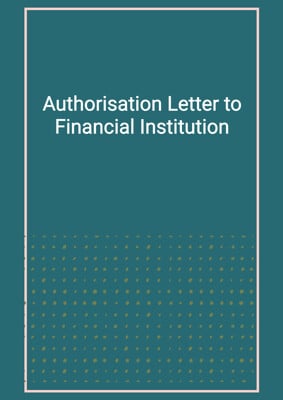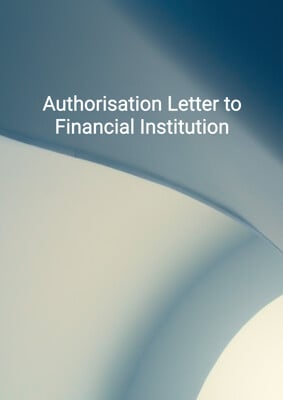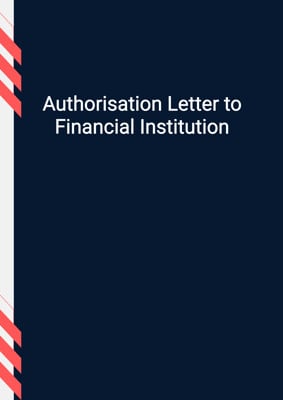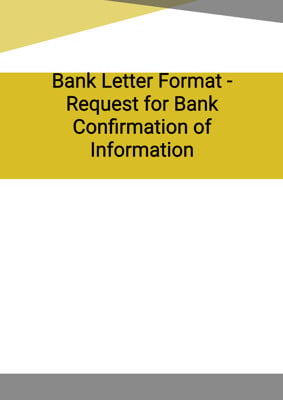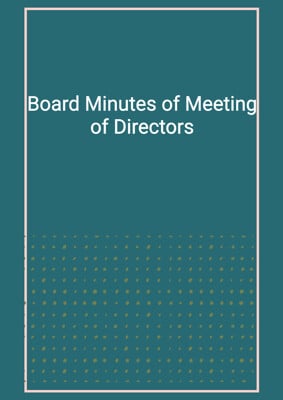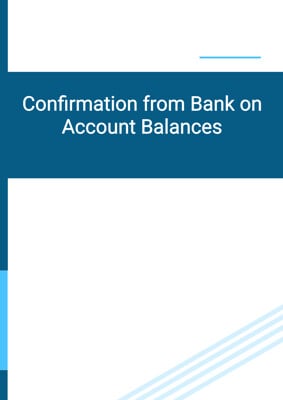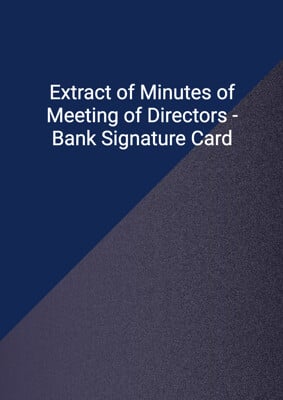
Authorisation Letter to Financial Institution
Operating of Discretionary Account
This document is an Authorisation / Request form given by a company / entity to open a discretionary account with a financial institution for investment / trading purposes. It authorises the bank to open up a corporate account in which all the purchases, sales, holdings and other dealings in securities effect from time to time. It allows a broker to buy and sell security without the consent of the client for each trade.
How to Tailor the Document for Your Need?
01
Create Document
Fill in the details of the parties. You can click the "Fill with Member’s Information" button to complete it with information saved to your account.
02
Fill Information
Please fill in any additional information by following the step-by-step guide on the left hand side of the preview document and click the "Next" button.
03
Get Document
When you are done, click the "Get Document" button and you can download the document in Word or PDF format.
04
Review Document
The document should be signed by the authorised signatory (or directors of a company) and witnessed to complete the formality.
Document Preview
Document Description
The document titled 'Authorisation Letter to Financial Institution' is a formal letter that grants authorization to a financial institution to operate a discretionary account on behalf of the account holder. The importance of this document lies in its legal significance and the establishment of a clear understanding between the account holder and the financial institution.
The entire document consists of a letter addressed to the financial institution, expressing the account holder's request to open and maintain a discretionary account. The letter specifies that the financial institution is authorized to execute transactions in securities on behalf of the account holder, based on the terms of the client agreement. The discretionary authority granted to the financial institution is limited to trade execution only, and the settlement of transactions will be handled directly with the account holder.
Each section of the document serves a specific purpose. The introductory section provides the recipient with the necessary information about the account holder, including their name, address, and the date of the letter. The main body of the letter clearly states the account holder's authorization for the financial institution to operate the discretionary account and highlights the binding nature of the actions undertaken by the financial institution within the scope of the client agreement. The letter also confirms the account holder's understanding of the risks involved and their right to revoke the authority granted.
The document concludes with the account holder's signature, which is witnessed by another individual. The witness's name and identification details are also recorded. The employee of the financial institution responsible for handling the account signs and dates the document as well.
In summary, the 'Authorisation Letter to Financial Institution' is a detailed document that establishes the account holder's authorization for a financial institution to operate a discretionary account. It outlines the terms of the client agreement, the limitations of the financial institution's authority, and the account holder's understanding of the risks involved.
How to use this document?
1. Provide account information: Fill in the details of the account holder, including the name and address of the company, as well as the current date.
2. Express authorization: Clearly state the account holder's authorization for the financial institution to operate a discretionary account on their behalf. Specify that the authority is limited to trade execution only.
3. Clarify settlement process: Mention that the financial institution's settlement team will directly contact the account holder for the settlement of transactions.
4. Annual confirmation: Confirm that the account holder needs to annually confirm with the financial institution whether they wish to revoke the authority granted, even without notification from the institution.
5. Acknowledge legal binding: Confirm that actions undertaken by the financial institution within the scope of the client agreement are legally binding and that the transaction results are solely for the benefit and at the risk of the account holder.
6. Sign and witness: Sign the document as the account holder, and have a witness sign as well. Record the witness's name and identification details.
7. Employee signature: Have the designated employee of the financial institution sign and date the document.
8. Retain a copy: Keep a copy of the fully executed document for future reference and record-keeping purposes.
Not the right document?
Don’t worry, we have thousands of documents for you to choose from:



